UFO or Crazy Cloud? ‘Weird Cloud Atlas’ Helps You Decide
Clouds come in a vast array of unusual shapes and sizes, and the Weird Cloud Atlas wants to help you sort of what is what
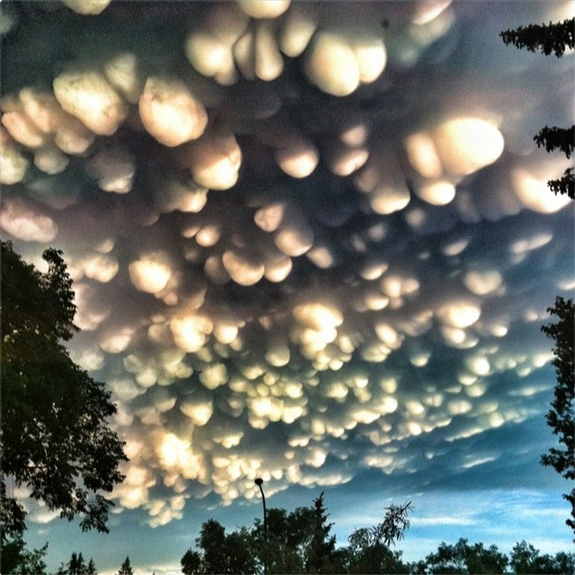
Mammatus clouds over Saskatchewan. Photo: Robinlawless
There are way more types of clouds in the world than “big, white, and puffy,” despite what the drawings of nearly every five year old or, let’s face it, adult would suggest. Varying with altitude, moisture content and how the atmosphere is moving around, clouds come in a vast array of unusual shapes and sizes. Some take on undulating forms, like gravity wave clouds, which arise when a stream of wind undulates up and down as it flows through the air, with clouds forming at the peaks of the wave and clearings at the troughs. And that’s just the beginning. When unusual clouds arise, people tend to get pretty excited.
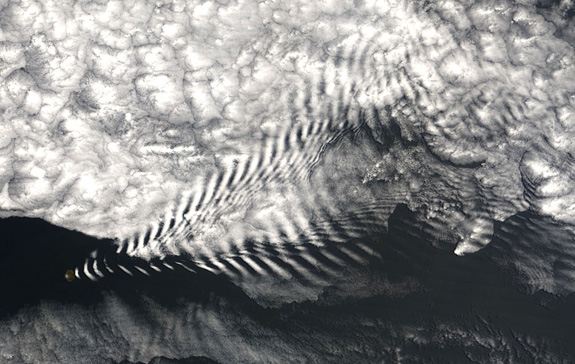
These gravity wave clouds were formed when air was diverted up and over a small island. Photo: NASA Earth Observatory
In the Telegraph, the newspaper compiled a “Weird Cloud Atlas,” showcasing a number of unusual cloud types seen around the world. One cloud type, which kicks off the slideshow and is known as a lenticular cloud, is a favorite of UFO aficionados. In fact, these disk-shaped clouds have a tendency to be mistaken for extraterrestrial vehicles.
There are a few choice types that didn’t make it on to the list however, such as:
Kelvin Helmholtz clouds. These unusual wave-shaped clouds are formed when two separate streams of air in the atmosphere are flowing alongside one another at different speeds. The interaction causes turbulence at the interface between the two air packets, leading to the strange structure. This process is explained in more detail here.
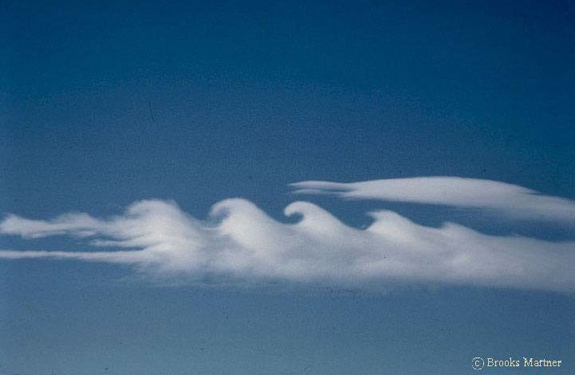
Kelvin-Helmholtz clouds. Photo: Brooks Martner / NOAA / SCATCAT
Morning Glory clouds are a regular occurrence in northeastern Australia, but unfortunately scientists aren’t really sure how they arise.
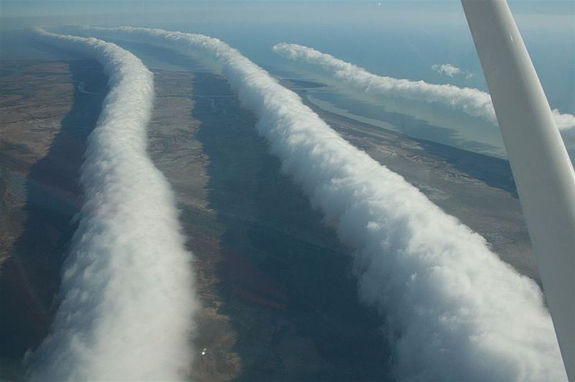
Morning Glory clouds in Queensland, Australia. Photo: Mick Petroff
And, weird clouds aren’t purely a terrestrial occurrence. Working from photos taken by the Mars Pathfinder rover in 1997, scientists recently discovered Martian high altitude clouds. Unlike on Earth, these Martian clouds are made from carbon dioxide, not water.
More from Smithsonian.com:
Planes Punch Holes in Clouds and Create Rain
/https://tf-cmsv2-smithsonianmag-media.s3.amazonaws.com/accounts/headshot/smartnews-colin-schultz-240.jpg)
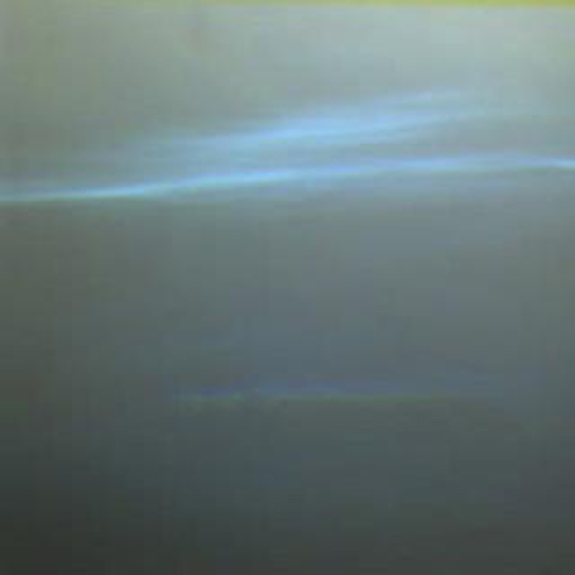
/https://tf-cmsv2-smithsonianmag-media.s3.amazonaws.com/accounts/headshot/smartnews-colin-schultz-240.jpg)